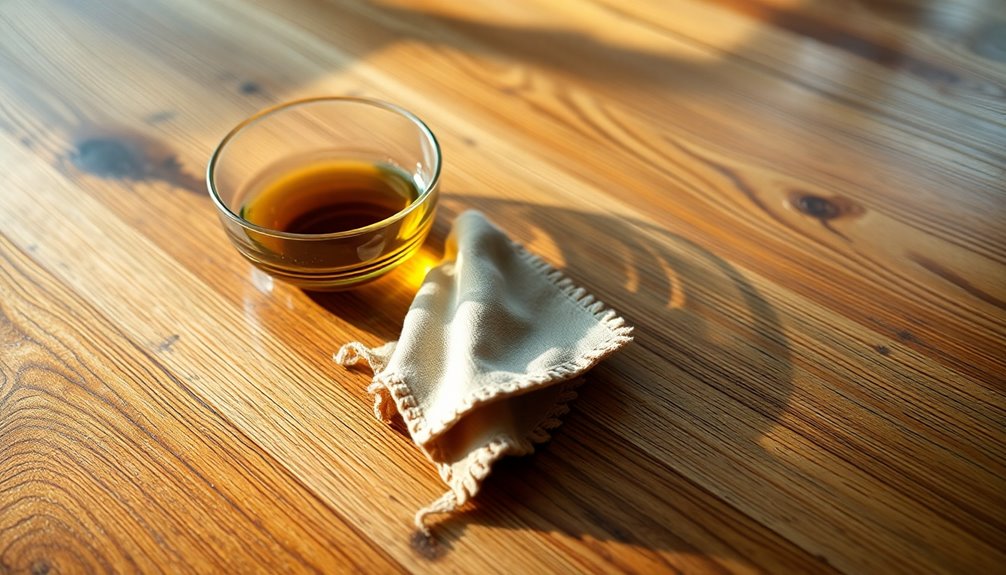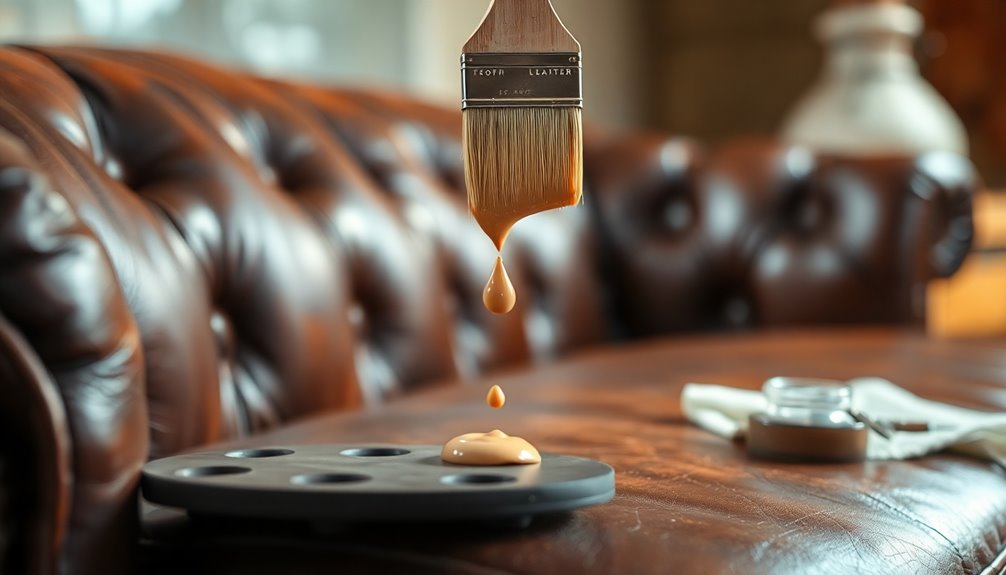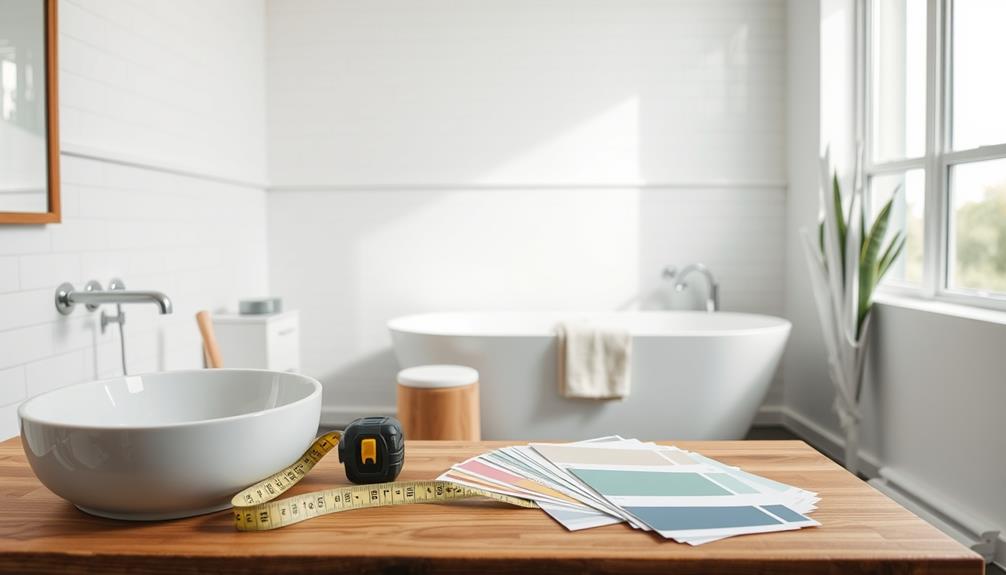To remove stains from your sofa, start by identifying the fabric type using the care tag. For fabric sofas, mix baking soda with a soap-vinegar solution. Microfiber requires rubbing alcohol, while leather sofas benefit from a damp cloth with water and vinegar. Always spot test any cleaner first. Blot spills as soon as they happen to minimize damage. For stubborn stains, consider enzymatic cleaners, especially for pet urine. Regular vacuuming helps prevent dirt build-up, making it easier to assess stains. If you stick around, you’ll discover more tips for maintaining your sofa’s look and durability. Additionally, it’s important to address any spills promptly to prevent them from setting in, which makes sofa stain removal techniques all the more effective. Always use a clean, white cloth to avoid transferring colors onto your fabric. If you’re unsure about the right approach, consulting a professional cleaner can provide tailored advice for specific stains and materials.
Key Takeaways
- Identify the fabric type and check care tags for appropriate cleaning codes (W, S, WS, X) before attempting stain removal.
- For general stains on fabric couches, use a baking soda and soap-vinegar solution, applying with a soft cloth.
- For microfiber couches, dab the stain gently with rubbing alcohol and a clean cloth to lift the mark.
- Treat pet urine stains immediately by blotting with a clean cloth and using enzymatic cleaners for odor control.
- Always perform a spot test on an inconspicuous area before applying any cleaning solution to avoid damage.
Introduction

Keeping your sofa clean starts with routine vacuuming and dusting to prevent dirt buildup. You'll also want to use material-specific cleaning techniques for the best results, especially if you're dealing with tough stains like pet urine. By addressing these issues promptly, you can maintain your couch's appearance and longevity.
Routine Vacuuming and Dusting
While you might not think about it often, routine vacuuming and dusting are essential for maintaining your sofa's appearance and longevity. Regular vacuuming helps prevent dust, crumbs, and debris from settling into your upholstery, which can lead to deeper stains over time. Aim to vacuum your sofa at least once a week, paying special attention to crevices and seams where loose particles commonly accumulate.
Using an upholstery attachment on your vacuum can effectively remove these particles without damaging the fabric. This frequent vacuuming not only prolongs the life of your couch but also aids in fading old stains by removing trapped dirt around them. A thorough vacuuming session makes assessing the extent of any stains easier, allowing you to develop more effective stain removal strategies.
Material-Specific Cleaning Techniques
Understanding the unique cleaning needs of your sofa's material is crucial for effective stain removal and maintenance. Different fabrics require specific cleaning techniques, so always check the cleaning codes on your couch's care tag (W, S, WS, X) before starting.
For fabric couches, deodorize with baking soda and create a cleaner using 1 tsp. dish soap, 1 Tbsp. vinegar, and 1 cup of warm water. Use a white microfiber cloth to dab and gently rub the stain. If your couch is microfiber, spray rubbing alcohol on the stained area, scrub with a light-colored sponge, and let it dry quickly.
For leather couches, vacuum thoroughly first. Then, mix equal parts water and vinegar to create a cleaning solution. Use a damp microfiber cloth to clean, rinsing it frequently to avoid residue build-up.
No matter the material, always conduct a spot test on a hidden area before applying any cleaning solution. This helps prevent potential damage or discoloration, ensuring that your upholstery remains in top condition while keeping those pesky stains at bay.
Targeting Pet Urine Stains
When it comes to tackling pet urine stains, swift action is key to preventing lasting damage and odors. Start by blotting the stain with a clean, absorbent cloth to soak up as much liquid as possible. Avoid rubbing, as this can spread the stain further into your sofa fabric. Once you've blotted the excess, reach for an enzymatic cleaner specifically designed for pet stains. These cleaning products break down the compounds in urine, providing effective odor control rather than just masking the smell.
Apply the enzymatic cleaner to the affected area and allow it to sit for the recommended time. Afterward, rinse the area with plain water to remove any residue, and then blot it dry with a clean cloth. If the stain persists despite your efforts, it may be time to consider professional cleaning services. They have specialized equipment and solutions for a deep clean that can eliminate stubborn stains and lingering odors. By acting quickly and choosing the right methods, you can restore your sofa and keep it looking and smelling fresh.
Couch Stain-Resistant Fabric Choices
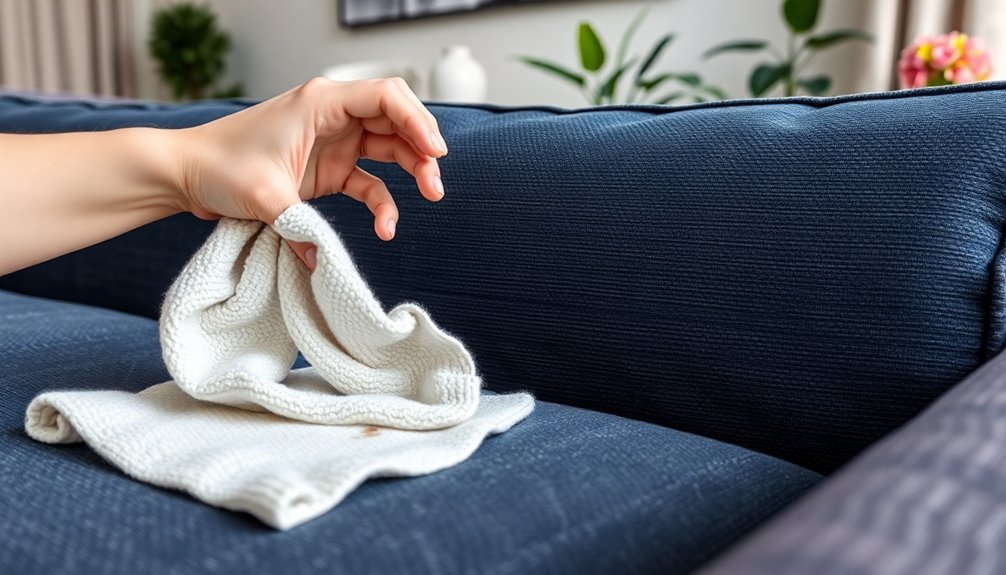
When choosing a couch, consider water-resistant fabric options to help keep spills at bay. You might also want to opt for machine-washable throws to make cleanup easier. Plus, using coasters for drinks can go a long way in protecting your upholstery from accidental stains.
Water-Resistant Fabric Options
Choosing the right fabric for your sofa can make all the difference, especially if you have kids or pets. Opting for water-resistant fabrics, like microfiber or certain synthetics such as polyester, provides a strong barrier against spills and stains. These materials are not just durable; they're also treated with stain-repellent finishes that help prevent liquids from soaking in, making cleanup a breeze.
When shopping, pay attention to cleaning codes. Fabrics labeled with "W" or "S/W" can handle water-based cleaning solutions, which is essential for effective upholstery cleaning. Using these cleaning methods means you won't damage the fabric while tackling those inevitable messes.
Additionally, consider using sofa covers made from water-resistant materials. They not only shield the underlying fabric from stains but are also easy to remove and wash. Look for options that combine durability with breathable fabrics to ensure your sofa remains comfortable while resisting spills and stains. With the right water-resistant fabric choices, you can enjoy your living space without the constant worry of accidents ruining your sofa. Moreover, maintaining proper air quality in your home can further help in reducing allergens that may settle on your upholstery.
Opt for Machine-Washable Throws
To keep your sofa looking fresh and clean, opting for machine-washable throws is a smart choice. These throws are a practical solution for protecting couches from all kinds of stains, whether they're food stains or pesky coffee stains. Look for options made from stain-resistant fabric, like microfiber or polyester blends, which repel spills and simplify your cleaning methods.
Many machine-washable throws can endure multiple washes without losing their shape or color, ensuring they provide long-lasting protection while maintaining your sofa's aesthetics. Additionally, some throws come with water-repellent finishes, giving you extra defense against liquid stains. Incorporating stain-resistant fabric into your living space can significantly reduce the frequency of cleaning and maintenance.
When selecting your throw, consider choosing darker colors or patterns. They can help disguise minor stains and wear, prolonging the overall appearance of your sofa. Using a machine-washable throw as a sofa cover not only keeps your couch materials safe but also makes it easy to refresh your living space by simply tossing it in the wash when needed. Embracing machine-washable throws is a smart and stylish way to keep your sofa looking great and to minimize the hassle of cleaning up after life's little accidents.
Using Coasters for Drinks
Using coasters for drinks is a simple yet effective way to protect your sofa from moisture rings and stains. By placing coasters under your beverages, you create a barrier that prevents condensation and heat from damaging your upholstery. This proactive approach not only preserves the appearance of your sofa but also extends its longevity.
When you choose stain-resistant fabric options like microfiber or treated polyester, you're enhancing this protective strategy. These materials are designed to repel liquids, making spills less likely to result in permanent stains. Regularly using coasters can significantly reduce the frequency of cleaning sessions required for your couch, saving you time and effort in maintenance.
Additionally, coasters help you maintain a clean environment by minimizing the chances of accidental spills. By combining the use of coasters with stain-resistant fabrics, you create a robust defense against potential damage. This dual approach ensures your sofa remains looking its best, allowing you to enjoy your space without worrying about unsightly stains or moisture rings. So, invest in some stylish coasters and enjoy peace of mind while sipping your favorite drink on your beautiful sofa.
Couch Frame Reinforcement Techniques
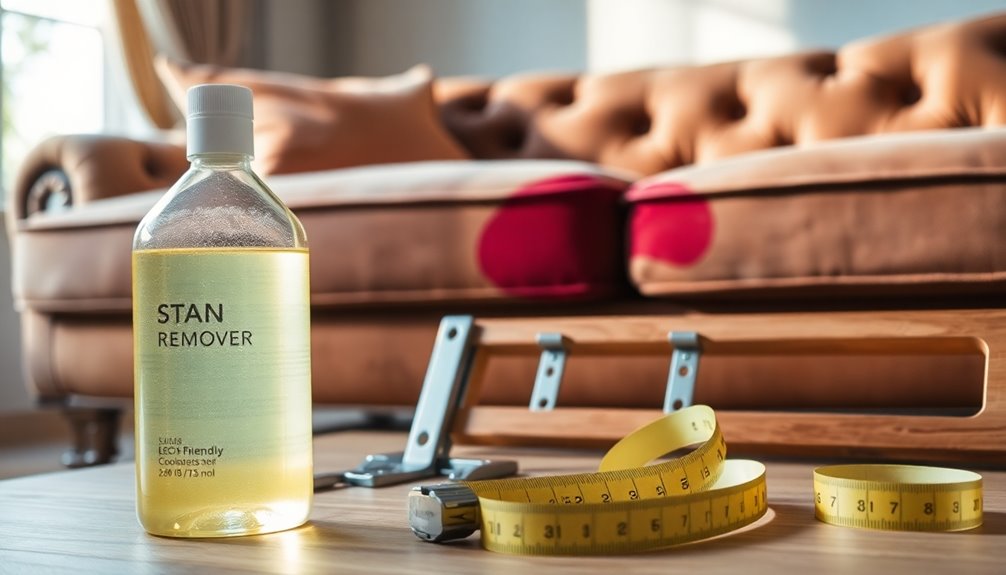
When it comes to keeping your couch sturdy, addressing frame stability is key. You can improve support by adding corner braces or using wood glue with screws for stronger connections. Plus, opting for durable fabrics during reupholstering can enhance your seating solution while ensuring it stays cozy and supportive for years to come.
Frame Stability Concerns
One effective way to address frame stability concerns in your sofa is by reinforcing its structure with corner brackets. These brackets provide crucial support at the joints, preventing wobbling or sagging over time. Additionally, consider incorporating plywood or particle board beneath the cushions to evenly distribute weight, especially if you're dealing with heavier users.
Regularly tighten loose screws and replace damaged bolts to significantly improve your sofa's integrity and prolong its lifespan. Adding cross supports using wooden dowels or metal rods between the front and back of the frame will stabilize the structure further and prevent bowing.
Don't neglect the legs of your sofa—ensure they're sturdy and securely attached to maintain balance and prevent tipping, particularly in high-traffic areas. By reinforcing your sofa's frame, you create a solid foundation that can handle daily use. This is especially important if you want to clean your couch effectively and remove stubborn stains like coffee or others, as a stable frame will allow you to work without worrying about damaging the whole couch. Be proactive about these techniques, and you'll enjoy a more durable and reliable piece of furniture.
Reupholstering With Durable Fabrics
To ensure your sofa not only looks great but also stands the test of time, reupholstering with durable fabrics is a smart choice. Fabrics like microfiber or synthetic blends significantly enhance your couch's longevity, providing resistance to stains and wear. When you're reupholstering, consider using upholstery fabrics treated with stain-resistant finishes. These not only help maintain the couch's appearance but also simplify cleaning methods for future messes.
While reupholstering, don't overlook the importance of reinforcing the couch frame. Use plywood or particle board for added support, especially in high-stress areas like the seat and back. Employ corner blocks or braces to strengthen the joints, which reduces the chance of wobbly or loose parts over time.
Furthermore, incorporating high-density foam cushions not only boosts comfort but also helps maintain the shape and structure of your sofa for years to come. By choosing durable fabrics and reinforcing the frame, you'll create a sturdy, stylish piece that withstands everyday life, making it a practical investment for your home.
Cozy, Supportive Seating Solutions
Comfort and stability are essential for creating a cozy seating experience in your living space. To enhance your couch's durability and support, reinforcing the frame is a smart move. Start by adding corner blocks to the joints; this increases stability and ensures your couch can handle regular use without compromising its integrity.
Consider placing plywood or additional wooden supports beneath the cushions. This helps distribute weight evenly, offering a sturdier seating experience. Regularly checking and tightening screws and bolts on the frame will prevent wobbling, enhancing overall safety and comfort.
If your couch experiences frequent movement or heavy use, incorporating metal brackets at key stress points can provide extra reinforcement. These techniques not only protect your couch from sagging but also prolong its life, allowing you to enjoy your upholstery longer without worrying about stains and wear.
Couch Cushion Firmness Adjustments
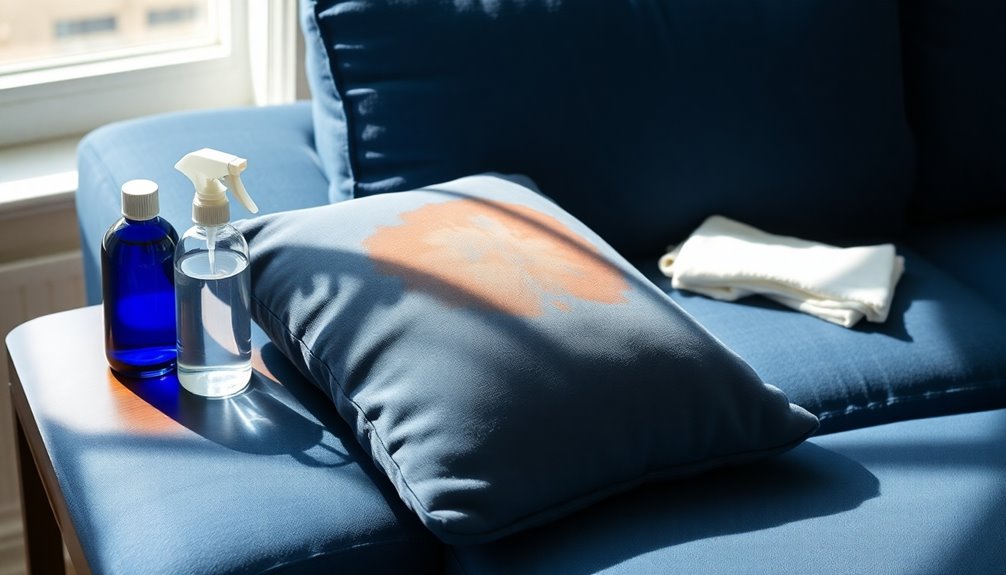
Maintaining your couch's cushion firmness is essential for a comfortable seating experience. Regularly rotating and fluffing your cushions can help prevent uneven wear and extend their lifespan. If your couch has removable cushions, flipping them periodically ensures an even distribution of firmness across all sides. This simple adjustment not only redistributes weight but also enhances overall comfort.
For a deeper level of customization, consider adding or replacing foam inserts in your cushions. This can significantly improve firmness, allowing you to achieve the perfect seating experience tailored to your preferences. If your sofa has attached cushions, using a fabric-safe spray or conditioner can rejuvenate the couch's material, helping to maintain a firm feel over time.
Don't forget to check the firmness of your cushions regularly. By adjusting their placement and keeping them fluffed, you'll ensure they continue to provide the support you need. Making these adjustments is a straightforward way to keep your couch comfortable and inviting for years to come. So, take a few moments to care for your cushions, and enjoy a cozy seating solution that meets your needs.
Couch Maintenance for Longevity
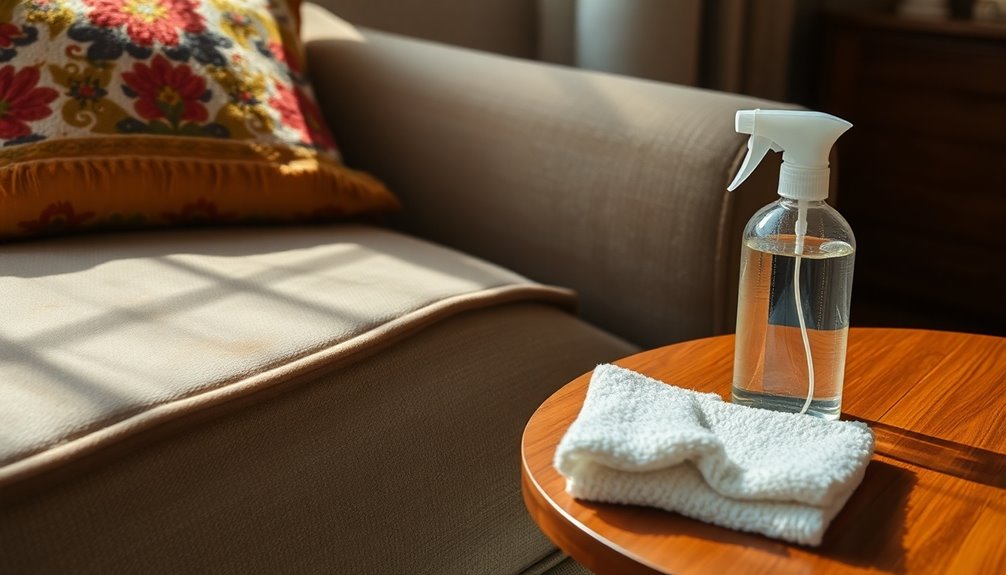
Proper care for your couch significantly impacts its longevity and overall appearance. One of the simplest yet most effective maintenance tasks is vacuuming at least once a week. This helps remove dust and crumbs that can lead to deeper stains and prolongs the lifespan of your upholstery.
To protect your couch from future stains, consider using upholstery protection sprays. These create a barrier against spills, making cleanup easier and maintaining the couch's pristine look. Additionally, rotating and fluffing your cushions every few weeks is crucial. This practice prevents uneven wear and extends the overall life of your sofa.
When spills happen, act quickly. Use a blotting technique with a soft cloth to absorb the liquid, preventing stains from setting in. Finally, don't forget about deep cleaning your couch every 6-12 months. This thorough process addresses accumulated dirt and odors, ensuring your couch remains in top condition.
Conclusion
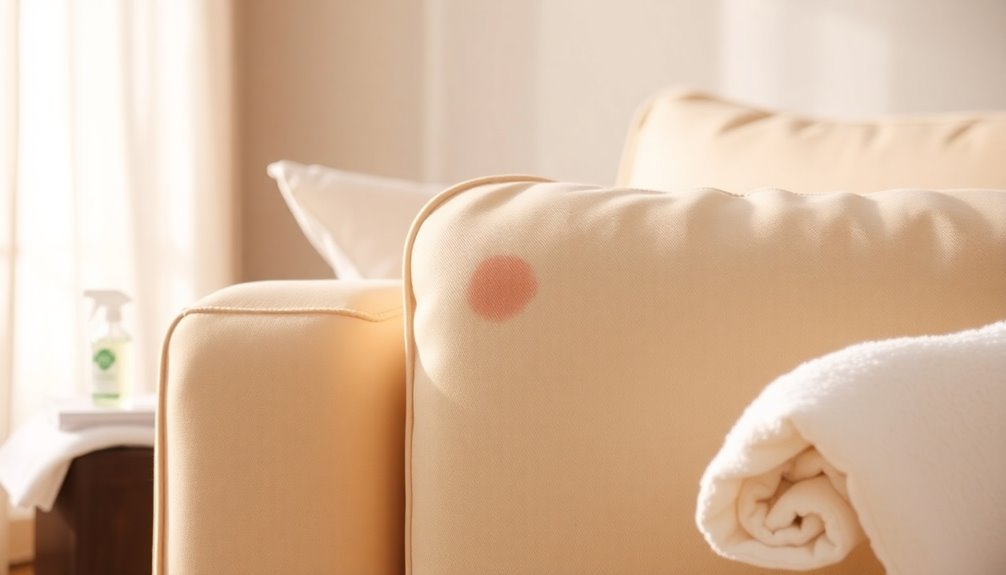
In the end, taking swift action when dealing with sofa stains can make all the difference in preserving your upholstery's appearance. Always check the fabric care tag on your sofa to ensure you use the safest cleaning methods. For fresh stains, it's crucial to blot dry with absorbent towels to remove moisture quickly. When tackling solid stains, scrape and vacuum once dry.
You can effectively clean a couch with DIY methods, like a mixture of dish soap and water or using baking soda and vinegar for grease stains. These solutions can work wonders for initial treatments. However, stubborn or old stains may require more effort. If your attempts don't yield results, don't hesitate to seek professional upholstery cleaning services. They have the expertise and tools to remove even the toughest stains while preserving the integrity of your fabric.
Ultimately, the key is to act fast and choose the right techniques. By following these guidelines, you'll not only maintain a clean couch but also extend its lifespan, ensuring it remains a beautiful centerpiece in your home for years to come.
Frequently Asked Questions
How Do You Get Stains Out of a Fabric Couch?
When you notice a stain on your fabric couch, act fast to prevent it from setting. Start by blotting the area with a clean cloth to absorb moisture. Mix one teaspoon of dish soap and a tablespoon of vinegar in a cup of warm water, then gently dab the stain. Rinse with a damp cloth to remove any soap. For stubborn stains, consider using a commercial upholstery cleaner specific to your fabric.
How to Remove an Unknown Stain From a Sofa?
To tackle an unknown stain on your sofa, start by gently blotting it with a clean, dry cloth to absorb excess moisture. You should identify your fabric type from the care tag to determine the appropriate cleaning method. Mix a few drops of dish soap with warm water and test it on a hidden area. If needed, use a vinegar-water solution or a commercial cleaner, ensuring you spot-test first.
How Do You Get Dried Stains Out of Fabric?
To get dried stains out of fabric, start by gently scraping off any solid residue with a dull knife. Vacuum the area to remove loose particles. Mix a solution of 1 teaspoon dish soap, 1 tablespoon vinegar, and 1 cup warm water, applying it to the stain with a clean cloth. Blot until the stain lifts. For stubborn stains, create a paste of baking soda and water, let it sit, then vacuum away the residue.
How to Remove Period Stains From a Sofa?
When you're dealing with period stains, act quickly! Start by blotting the area with a clean cloth to soak up excess moisture. Mix 1 tablespoon of dish soap with 2 cups of cold water, and gently dab it onto the stain, working from the edges inward. If it doesn't budge, try equal parts of white vinegar and water, letting it sit for 5-10 minutes. Afterward, blot it dry completely to avoid mildew.

